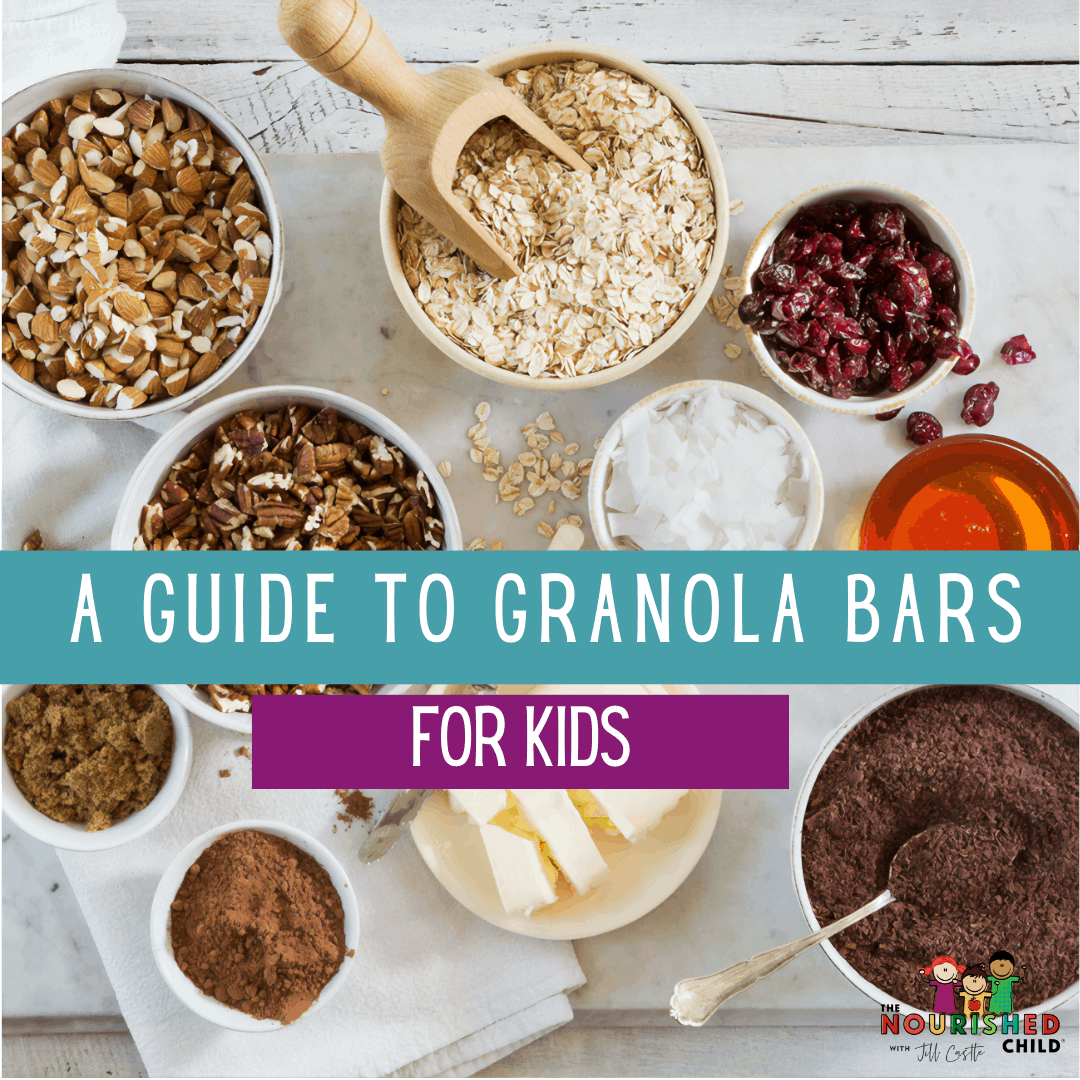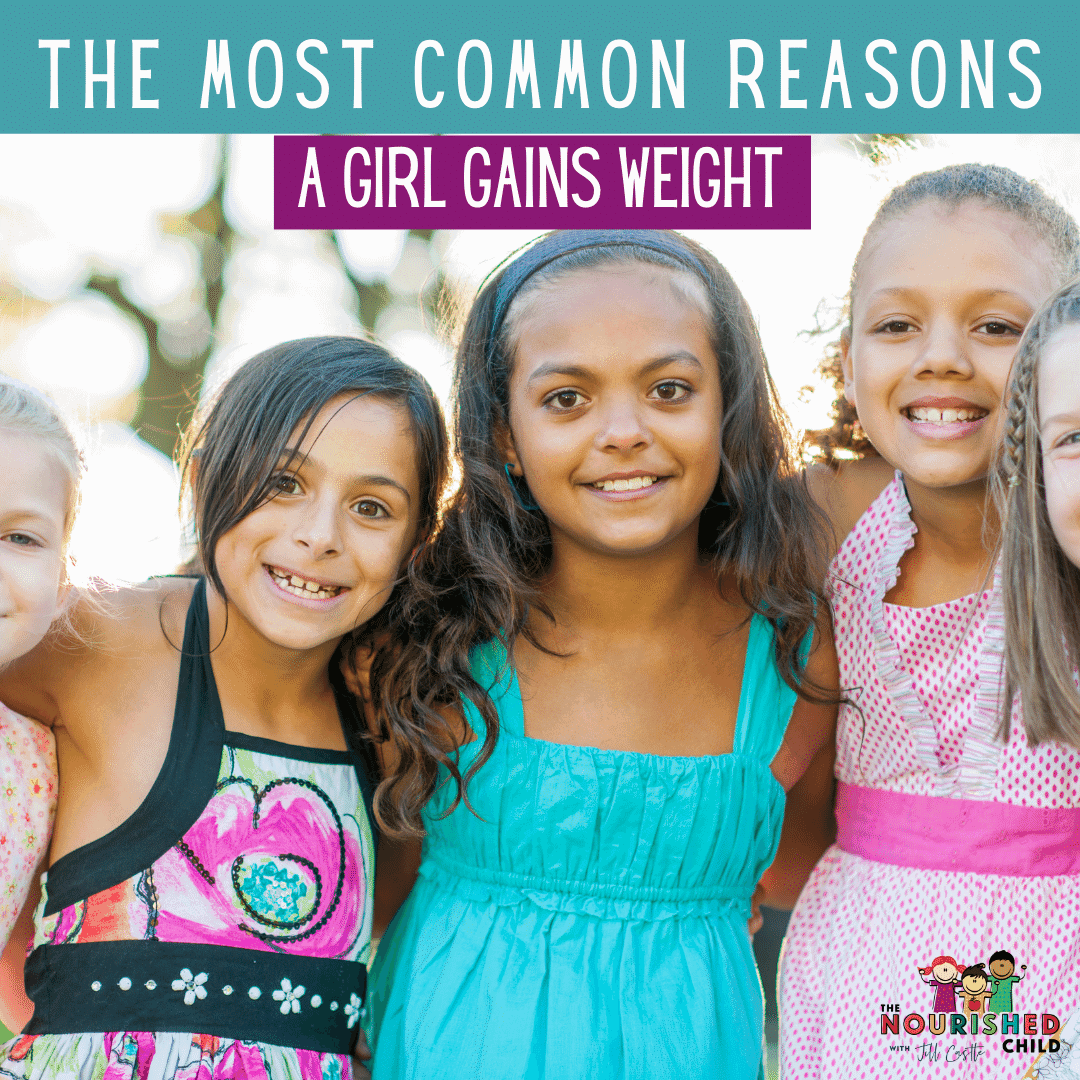19 Tips for Healthy Teen Bodies (without a Weight Loss Diet)
December 4, 2023
For teens with larger bodies, or who classify as “overweight,” you might wonder about the best way to lose weight as a teenager. Here are 19 lifestyle behaviors that will help your teen achieve a healthier body (and eliminate the risks associated with dieting!)
Our society focuses on thin, trim bodies – whether you’re a child or teen or adult. Kids get the message early on that larger bodies are unacceptable and this can do a lot of harm to their emotional wellbeing.
As a long-time pediatric dietitian with deep expertise and experience in pediatric nutrition, I’ve worked with many families concerned about their teen’s weight. Whether they have “overweight” teens or their teens are gaining weight too fast, parents naturally want to help their teenager be “healthy.”
For any teen who carries more body fat (or is “overweight”), so much of the focus turns to weight loss.
What’s the best way to lose weight as a teenager?
This is where I differ. Putting your teen on a weight loss journey is fraught with risk. Fad diets and dieting at this developmental period of life creates a high risk for disordered eating, poor body image, and a dysfunctional relationship with food.
In other words, teens are vulnerable – psychologically, emotionally, and physically – to the consequences of dieting.
So I take a different approach. An approach that focuses on healthy lifestyle changes and positive behaviors, which in truth, ends up being a pretty safe approach for every teen, no matter their size.
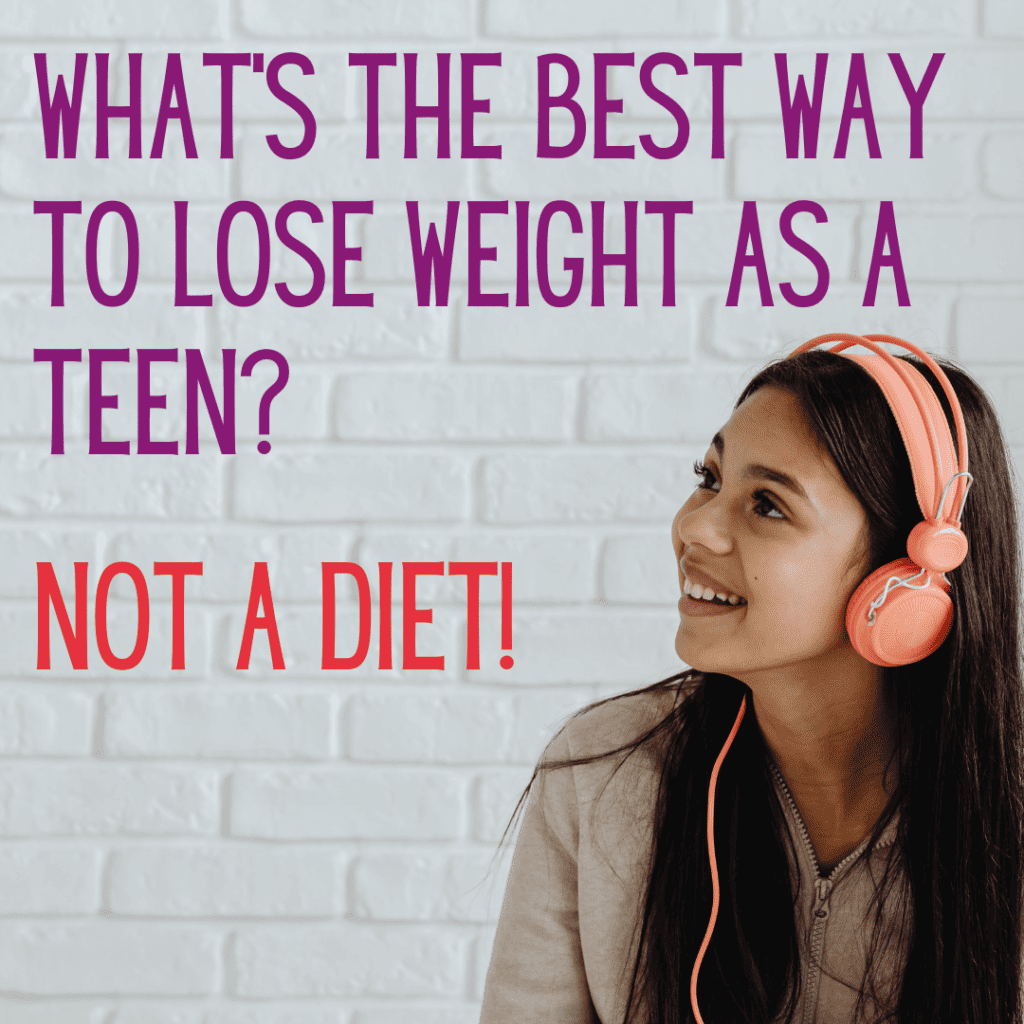
What is a Healthy Body?
When I think of a healthy body, I’m focused on function, not on the number on the scale or the BMI.
Can the body do what it’s supposed to do? And can that body do what it’s asked to do without medical conditions that may limit its function?
For example, can a body climb a set of stairs safely and without injury? Can a body rest without high blood pressure? Can a body move without a heightened risk of bone fracture or respiratory distress?
We can tell how well a body functions by looking at metabolic parameters like respiratory rate, blood pressure, blood glucose level, and more.
What Does Weight Have to Do with Body Function?
While excessive body fat is associated with higher incidences of health concerns like type 2 diabetes and cardiovascular disease, a larger body does not automatically mean these health conditions are present, or will occur.
When abundant body fat inhibits body function, or when health conditions do appear, or worsen as a teen’s size grows, the functioning of the body may be impaired.
Many people think this happens because of size, but oftentimes, unhealthy lifestyle habits have taken root.
I believe the way your teen lives their lives matters most when it comes to their health. But your teen may wonder about the best way to lose weight as a teenager.
The good news is that no matter your teen’s size, their body can function well when they focus on positive lifestyle habits.
And the even better news is that positive lifestyle behaviors improve mental health and emotional well-being – the exact opposite of what diets do!
19 Habits for Nurturing a Healthy Body in Teens (No Matter Their Size)
There are so many positive habits that improve both physical health and emotional well-being – I could write a book about it!
For now, let’s get you started with these 19 health-promoting habits.
Consistent Physical Activity
Our bodies were meant to move, whether it’s exercise or just walking the hallways and climbing the stairs in school. Every teen should be moving every day. Period.
Take a walk, play a sport, dance, do karate or drama practice… whatever floats your teen’s boat.
Did you know that just one episode of exercise improves the functioning of the whole body? Do it every day and it can do wonders for your teen’s health and body functioning.
Bottom line: Your teen should spend more time on their feet, and less time on their bottom.
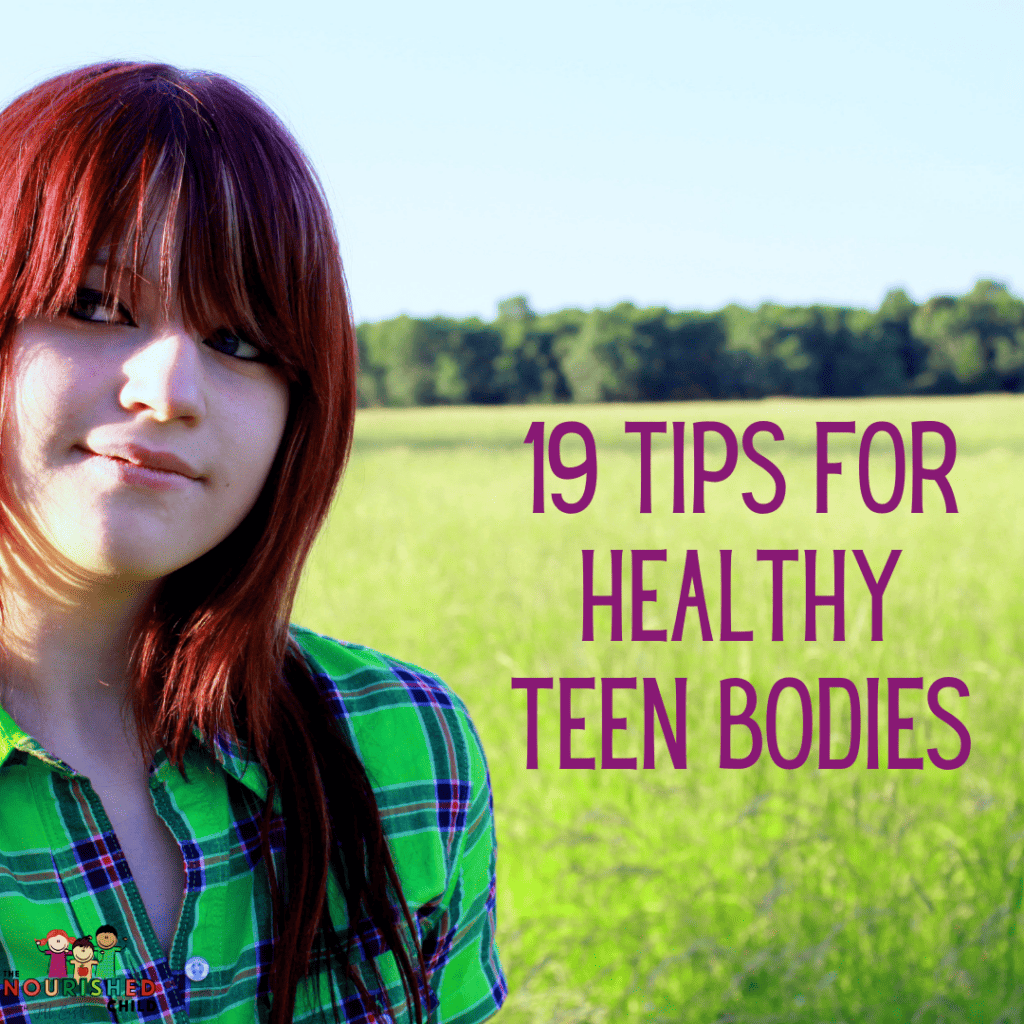
Build in Strength Training
Teens can build muscle with strength training. The more muscle mass your teen has, the speedier and more efficient their metabolism will be (translated: they will process the energy they get from food faster and may be less likely to store it as body fat, or adipose tissue).
Your teen doesn’t have to pump iron or become a bodybuilder to get the benefits of strength training. Body weight exercises like squats, lunges and push-ups are effective.
Bottom Line: All teens, no matter their size, can build muscle mass with strength training.
Limit “Junk” Food
I really dislike the term “junk” food, but if your teen is reading this, they will know what I’m referring to. The term I do prefer is minimally nutritious foods, or sweets, sugary drinks, and fried foods that contain few or very limited amounts of nutrients.
Candy, chips, and soda taste great, but they don’t deliver on nutrition. And being a dietitian, I use a ‘nutrient lens’ when I evaluate food. Teens are still potentially growing, their bones are still hardening and strengthening, and their brains are still developing.
Hence, nutrients are still quite important.
Bottom Line: Teens don’t have to eliminate “junk” foods, but they should take note of how much is in their daily eating patterns. And if there are minimally nutritious foods, are they helping or hurting?
Avoid Fad Diets
“ABC celebrity went on the XYZ diet and they lost so much weight, so fast!” reported one of my teenage clients.
Ugh. Part of my job when working with teens is to reprogram their thought processes about dieting and diet culture, and what they perceive as positive outcomes (weight loss).
Fast weight loss can happen, yes, but often the measures to make this happen are drastic and not sustainable. Too good to be true. And dangerous to self-esteem, body image, and mental health.
More often than not, weight that is lost comes back, and then some. And that can shake confidence, worthiness, and worsen mental health.
Bottom Line: Fad diets come and go. And come and go. And come and go. I’ve yet to see a fad diet work for the long-term in teens, but I can show you lots of fad diets that have caused eating disorders and eroded a teen’s sense of self and wellbeing.
Focus on Nourishing, Healthy Foods
The alternative to “junk” foods and fad diets is a variety of nutritious foods and a healthy diet that nourishes the whole body. Healthful foods can offer an array of nutrients that benefit the body and brain. Remember that nutrient lens? The more nutrients in food, the better.
But it’s not all about nutrients. Food can be emotionally nourishing, too. It can comfort, be a source of celebration and joy. Yes, food can nourish the soul.
Bottom Line: Keep nourishing foods front and center for your teen’s body, mind, and soul.
A Balanced Diet (Increase Food Variety)
What is a balanced diet after all? It can be a plate that represents all the food groups. It can be a week of bringing and buying lunch at school, having home-cooked meals on some nights, and dining out on others. It can be experimenting with cultural foods you haven’t had before, and increasing the repertoire of new foods. It can be having dessert with dinner.
The point I’m trying to make is that a “balanced diet” isn’t a perfect diet, nor does it mean the same thing for each person.
Bottom Line: Help your teen find their “balance” with food through trying new foods, eating more variety, and avoiding repetition.
Limit Exposure to Social Media
Most teens I know use social media. It can be a scary place for them, a potentially empowering place, and a place to connect with peers.
Although teens are at higher risk for bullying, disordered eating, and exposure to diet culture when using social media (hello, algorithm!), the other factor that affects their health is the sedentary nature of social media.
In other words, teens are often sitting when scrolling or engaging on social platforms.
While I don’t have a hard and fast social media limit for your teen – nobody really does – what you can do is minimize its usage during family meals, driving together in the car, and at night when teens should be sleeping.
Bottom Line: Less is more when it comes to social media. A drop in usage means teens are present with their world, with their families, and their friends IRL (in real life). And they’ll be moving more, too.
Get Enough Sleep
The teen years are a time of major shifts in the sleep cycle. Unfortunately, studies report more and more teens are lacking sleep. But sleep is foundational to emotional regulation, knowledge retention, appetite and eating patterns, and mental health.
The National Sleep Foundation recommends 8 to 10 hours of sleep for teenagers.
Bottom Line: Getting enough sleep is critical to a healthy body, inside and out.
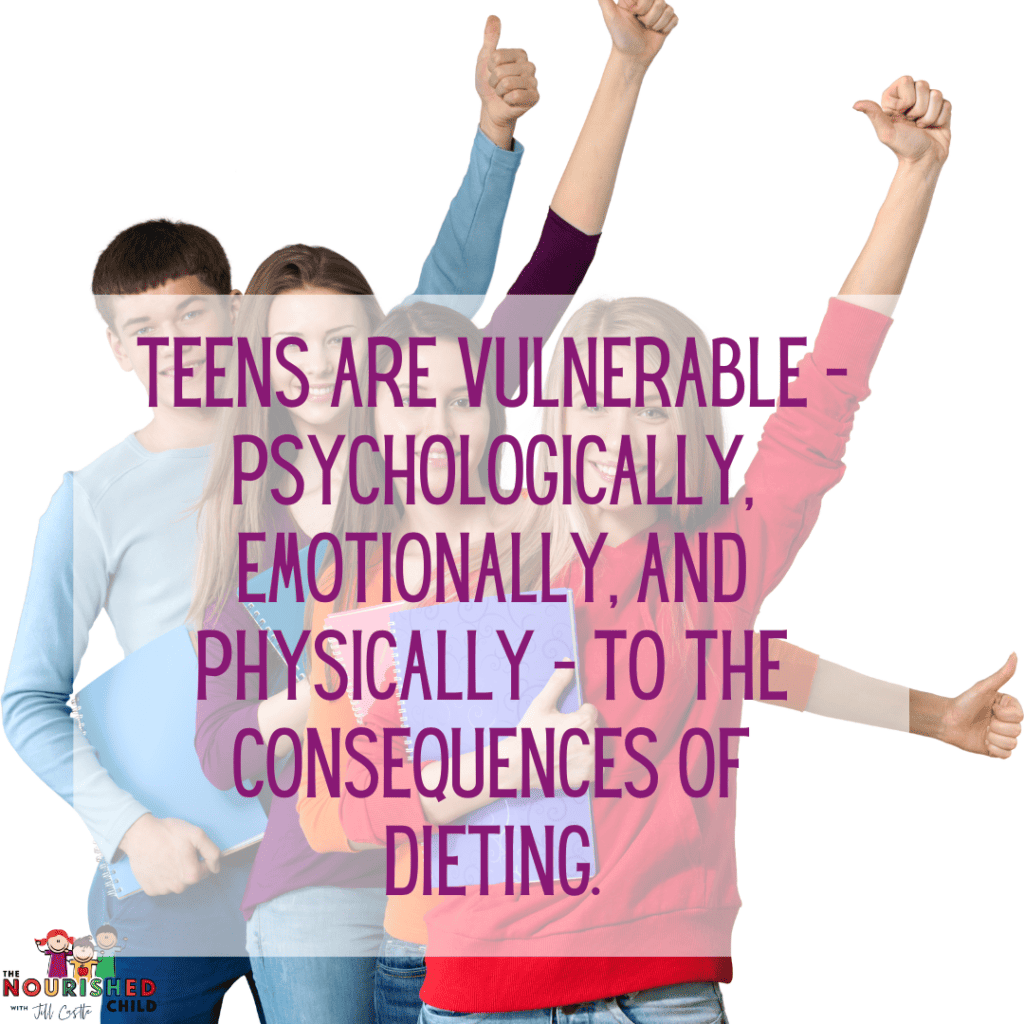
Watch out for Too Much Screen Time
The Kardashians and Netflix have many teens enamored and addicted…to their screens. Whether it’s TV, iPads, or computers, watching screens translates to sedentary activity (a term that means sitting or laying down).
Sedentary activity crowds out opportunities for physical activity (and the benefts associatied with it).
Bottom Line: I’m not saying “no screen time.” But the amount can be naturally limited by other health behaviors programmed into the day (ie, sleep, physical activity, meals, snacks, school, extra-curriculars), leaving time for a moderate amount.
Practice Mindful Eating
I practice mindful eating with my adolescent clients, and I often hear comments like “Wow, this takes a long time!”
Precisely.
Mindful eating slows down the pace of eating, encourages awareness of the senses like aroma and texture, and allows teens to become cognizant of their appetite.
Bottom Line: Mindful eating is a practice that helps teenagers pay attention to what and how much they’re eating so they can better regulate themselves.
Limit Soft Drinks (and other Sugary Beverages)
Most teens have curtailed drinking soft drinks and soda, but coffee drinks are on the rise and a significant contributor to the calorie density of the diet. Sugary beverages, as a category, are minimally nutritious – they offer calories and sugar but not much else.
Bottom Line: Regular consumption of soft drinks and other sugary beverages can stand in the way of cultivating a healthy body.
Occasional Fast Food
When my teens got their driver’s license, one of the first stops they made was at a fast food drive through. Not because they loved fast food, but because they wanted their independence.
I personally don’t have a problem with fast food, but consuming it regularly can be problematic.
Just like sugary beverages, fast food can tip eating patterns to favor salt, fat, and higher amounts of calories, and crowd out highly nutritious foods like fruits, vegetables and whole grains.
Bottom Line: Occasional fast food consumption can meet teens in their desire for independence while adding enjoyment to an overall healthful diet.
Eat More Whole Grains
Teen consumption of whole grains is inadequate, according to the Healthy Eating Index (HEI) score, a measure of overall diet quality.
But when teens get enough whole grains, they tend to feel fuller and satisfied after eating, and have regular bowel movements. The good news is you can find the amount of whole grains in a product on the front of the package.
Bottom Line: Encourage more whole grains and target 3-5 servings per day.
Practice Healthy Eating Habits
The teen years are a time when eating habits can get off track. Skipping meals, eating late at night, and grazing are some of the teen eating habits that may be detrimental to nurturing a healthy body.
One way to minimize poor eating habits is to have a regular time for meals and snacks and make sure they are satisfying physically. Meaning, your teen feels full or satisfied after eating. When that’s the case, grazing, late night snacks, and skipping is reduced.
Bottom Line: Regular food routines in the home help teens eat regularly.
Drink Enough Water
One of the things I think I did right with my children was to emphasize water intake with and between meals. Today, they seem to always have a water bottle with them.
Teens need at least 64 ounces of fluids per day (more if they are physically active), which can come from water, milk, juices, soups, juicy fruits and other foods that have a high liquid content.
Bottom Line: Good hydration helps all teenagers feel energized.
Healthy Snacks
I love snacks for teens, especially when they’re nutritious. They help them meet their nutrient needs and keep them satisfied throughout the day.
The key here is “nutritious.” I like to see snacks consist of at least 2 food types (yogurt and fruit; cheese and crackers; popcorn and nuts) and emphasize a source of protein or fiber.
Bottom Line: Nutritious snacks are a powerful addition to your teen’s eating pattern.
Foods with Dietary Fiber
As I’ve mentioned, fiber intake deserves more attention in teens. Both types of fiber, insoluble and soluble, are helpful in many ways, but particularly for gut health.
Teens need about 25 grams of fiber each day (girls) and 31 grams for boys. Adding more fruit, vegetables, whole grains, nuts, seeds, and beans to your teen’s meals and snacks will bump up the overall fiber in their diet.
Bottom Line: Dietary fiber improves gut health, bowel regularity, and helps fill up your teen when eating.
Include Lean Proteins
Many teen athletes focus on protein, but I think all teens should keep their eye on protein foods. For one, protein is the most satiating nutrient from food and studies have shown that when it’s included in a meal, people feel fuller earlier and longer.
For teens, protein at breakfast helps their satisfaction and minimizes body fat accumulation.
Bottom Line: Try to include a protein source at each meal, and at snacks, too. Distributing protein evenly throughout the day is best.
Small Changes Lead to Big Results
There’s a lot to do here, and truly, there’s even more. Tackle these tips one at a time, and break them down into small steps.
For example, try to add protein to 3 breakfast meals per week as a start. Or, look at your teen’s schedule together and see where time can be redistributed to minimize screen time or maximize movement.
Remember, small changes lead to big results. Chip away at one until you get a good habit established, and then tackle another tip. Keep going – your teen can have a healthy, functioning body at every size.
But Will My Teen Lose Weight?
It’s hard to say. Some teens will see changes in their bodies when they adopt more physical activities, cut down on video games and screen time, and make good choices consistently.
Other teens may have a body type that has a strong genetic tendency to carry more body fat. Positive lifestyle habits may improve body function, eliminate health problems, and help your teenager attain a healthy body.
However, your teen may not experience significant weight loss or match the body mass index goals on the growth chart.
If your teen’s body weight is contributing to medical conditions and limiting their day-to-day social, emotional, and physical functioning, check in with your health professional.
Young people with excess weight will be asked to improve their habits, many of which are listed above, but may need additional support to counteract health concerns, reverse chronic diseases, and improve their overall health.

